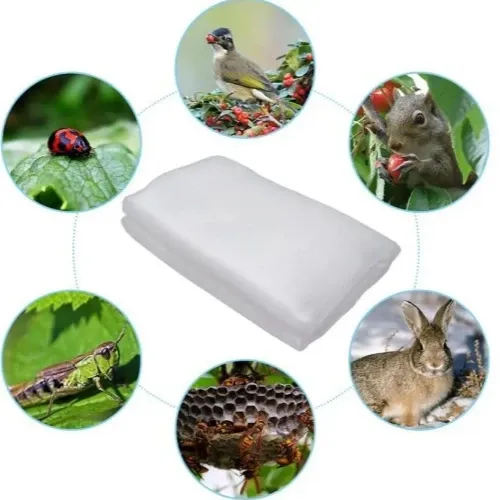-
 Afrikaans
Afrikaans -
 Albanian
Albanian -
 Amharic
Amharic -
 Arabic
Arabic -
 Armenian
Armenian -
 Azerbaijani
Azerbaijani -
 Basque
Basque -
 Belarusian
Belarusian -
 Bengali
Bengali -
 Bosnian
Bosnian -
 Bulgarian
Bulgarian -
 Catalan
Catalan -
 Cebuano
Cebuano -
 China
China -
 Corsican
Corsican -
 Croatian
Croatian -
 Czech
Czech -
 Danish
Danish -
 Dutch
Dutch -
 English
English -
 Esperanto
Esperanto -
 Estonian
Estonian -
 Finnish
Finnish -
 French
French -
 Frisian
Frisian -
 Galician
Galician -
 Georgian
Georgian -
 German
German -
 Greek
Greek -
 Gujarati
Gujarati -
 Haitian Creole
Haitian Creole -
 hausa
hausa -
 hawaiian
hawaiian -
 Hebrew
Hebrew -
 Hindi
Hindi -
 Miao
Miao -
 Hungarian
Hungarian -
 Icelandic
Icelandic -
 igbo
igbo -
 Indonesian
Indonesian -
 irish
irish -
 Italian
Italian -
 Japanese
Japanese -
 Javanese
Javanese -
 Kannada
Kannada -
 kazakh
kazakh -
 Khmer
Khmer -
 Rwandese
Rwandese -
 Korean
Korean -
 Kurdish
Kurdish -
 Kyrgyz
Kyrgyz -
 Lao
Lao -
 Latin
Latin -
 Latvian
Latvian -
 Lithuanian
Lithuanian -
 Luxembourgish
Luxembourgish -
 Macedonian
Macedonian -
 Malgashi
Malgashi -
 Malay
Malay -
 Malayalam
Malayalam -
 Maltese
Maltese -
 Maori
Maori -
 Marathi
Marathi -
 Mongolian
Mongolian -
 Myanmar
Myanmar -
 Nepali
Nepali -
 Norwegian
Norwegian -
 Norwegian
Norwegian -
 Occitan
Occitan -
 Pashto
Pashto -
 Persian
Persian -
 Polish
Polish -
 Portuguese
Portuguese -
 Punjabi
Punjabi -
 Romanian
Romanian -
 Russian
Russian -
 Samoan
Samoan -
 Scottish Gaelic
Scottish Gaelic -
 Serbian
Serbian -
 Sesotho
Sesotho -
 Shona
Shona -
 Sindhi
Sindhi -
 Sinhala
Sinhala -
 Slovak
Slovak -
 Slovenian
Slovenian -
 Somali
Somali -
 Spanish
Spanish -
 Sundanese
Sundanese -
 Swahili
Swahili -
 Swedish
Swedish -
 Tagalog
Tagalog -
 Tajik
Tajik -
 Tamil
Tamil -
 Tatar
Tatar -
 Telugu
Telugu -
 Thai
Thai -
 Turkish
Turkish -
 Turkmen
Turkmen -
 Ukrainian
Ukrainian -
 Urdu
Urdu -
 Uighur
Uighur -
 Uzbek
Uzbek -
 Vietnamese
Vietnamese -
 Welsh
Welsh -
 Bantu
Bantu -
 Yiddish
Yiddish -
 Yoruba
Yoruba -
 Zulu
Zulu
Creating Effective Boundaries with Guardrail Netting Solutions for Safety and Protection
The Importance of Guardrail Netting in Safety and Environmental Protection
In recent years, the development of infrastructure has led to a significant increase in the use of guardrail netting as a safety measure along highways, railways, and construction sites. Guardrail netting is a type of protective barrier designed to prevent debris, wildlife, and objects from entering dangerous areas, thereby enhancing safety for both motorists and pedestrians. As urban areas expand and traffic volumes rise, the need for effective safety measures has become more critical than ever.
One of the primary purposes of guardrail netting is to minimize accidents caused by debris. In areas with high-speed traffic, loose objects can pose severe risks when they collide with vehicles. Guardrail netting helps keep these objects contained, preventing them from becoming dangerous projectiles. For instance, during windy conditions, netting can effectively catch loose materials like gravel or construction debris that might otherwise be blown onto the road, endangering drivers. By creating a physical barrier, guardrail netting supports safer travel and minimizes the risk of accidents.
Moreover, guardrail netting plays a vital role in wildlife protection
. As urban development encroaches on natural habitats, wildlife often finds itself in perilous situations when crossing roads or railways. Guardrail netting acts as a deterrent, directing animals away from risky crossings and reducing the chances of vehicle-animal collisions. These nettings are strategically placed in areas with high animal traffic, thereby not only protecting the wildlife but also ensuring the safety of motorists.guardrail netting

In addition to enhancing safety, guardrail netting can have significant environmental benefits. For instance, when used in construction sites and along highways, it can help prevent soil erosion and sediment displacement. During heavy rain, loose soil can wash onto roads or waterways, leading to pollution and other ecological issues. Guardrail netting effectively retains soil on slopes and construction sites, reducing the risk of contaminants entering drainage systems and protecting local water quality.
The installation of guardrail netting is also a crucial consideration in the context of maintaining structural integrity in various infrastructures. In many regions, wildfires pose a significant threat to property and natural landscapes. Guardrail netting can help contain the spread of flames by acting as a barrier. Fire-resistant materials are often used in the production of guardrail netting, which can mitigate fire risks in susceptible areas, offering an added layer of protection.
Furthermore, the adaptability of guardrail netting allows it to be utilized across various environments. From urban settings to rural landscapes, the flexibility of these structures ensures that they can meet different safety requirements and environmental conditions. The materials used in netting can be tailored to offer specific properties such as durability, weather resistance, and visibility, accommodating the unique needs of each location.
In conclusion, guardrail netting is more than just a safety feature; it is a multi-faceted tool that promotes the well-being of society and the environment. By preventing accidents, protecting wildlife, controlling soil erosion, and enhancing structural resilience, guardrail netting has proven to be an essential component in modern infrastructure development. As we look toward the future, the continued application and innovation in guardrail netting will be vital in ensuring safe and sustainable environments for all.
-
Why Construction Steel Mesh is the Backbone of Modern InfrastructureNewsJun.27,2025
-
The Ultimate Solution for Versatile Industrial and Consumer ApplicationsNewsJun.27,2025
-
Smart Breeding Starts Here: The Ideal Breeder Net for GuppiesNewsJun.27,2025
-
Maximize Your Harvest with Smart NetNewsJun.27,2025
-
High-Performance Steel Mesh Solutions for Modern IndustryNewsJun.27,2025
-
Durable Solutions for Modern Agriculture and LandscapingNewsJun.27,2025











